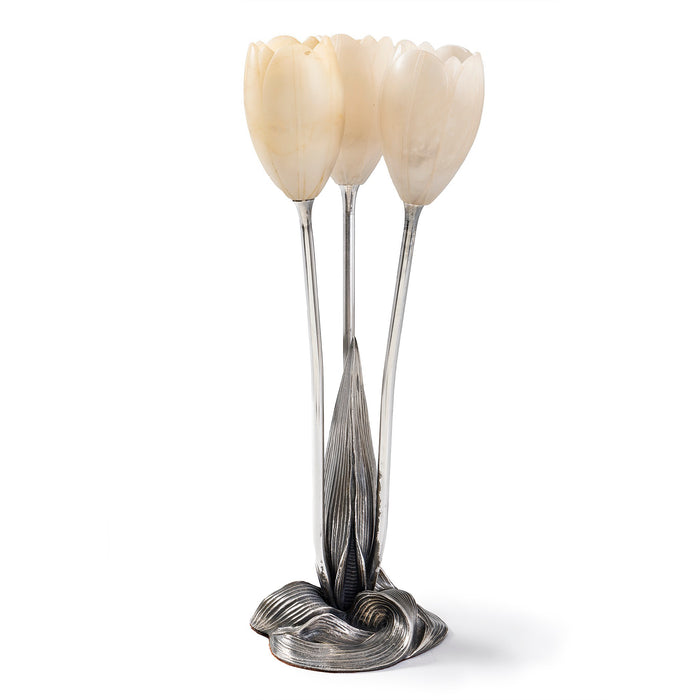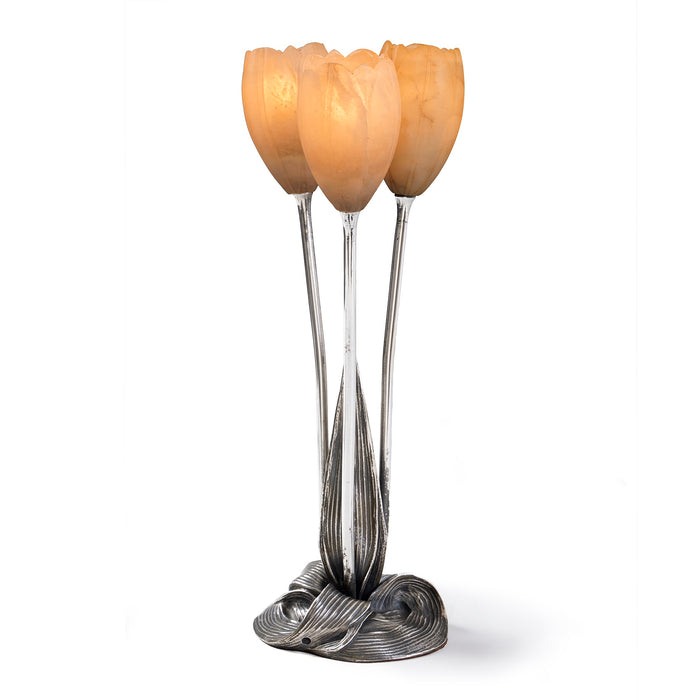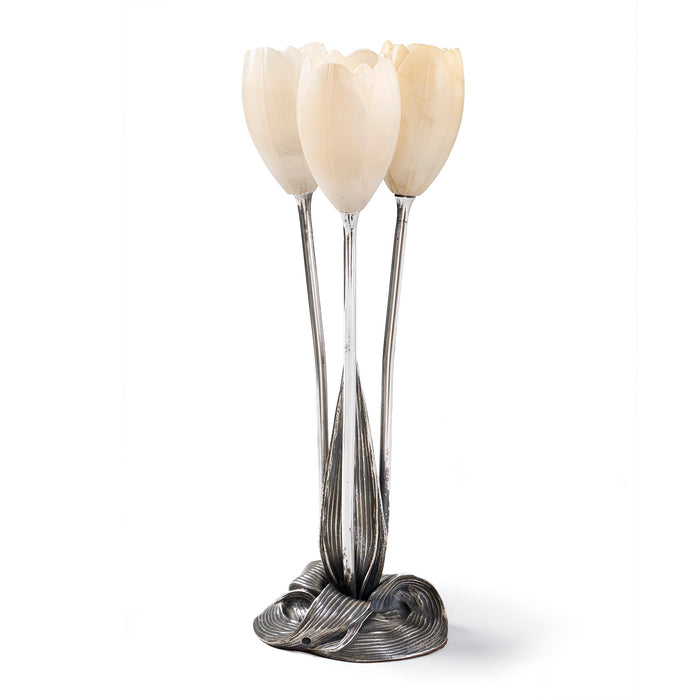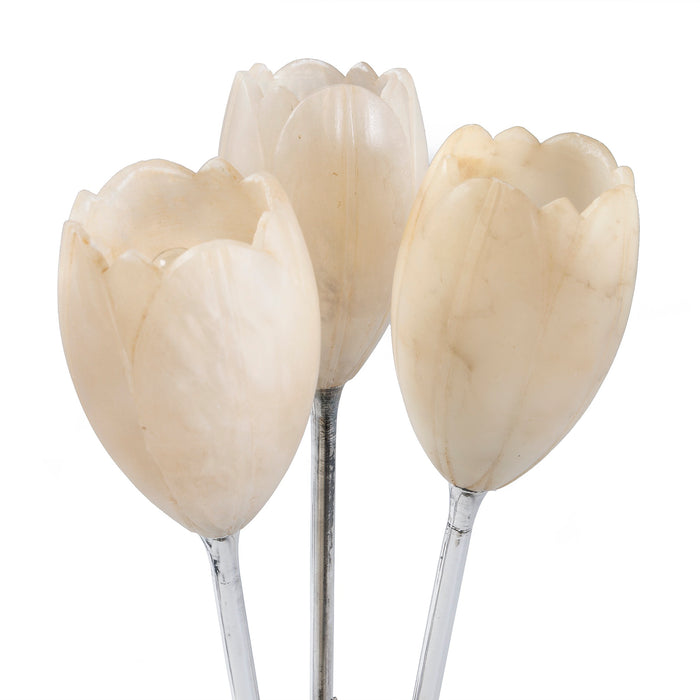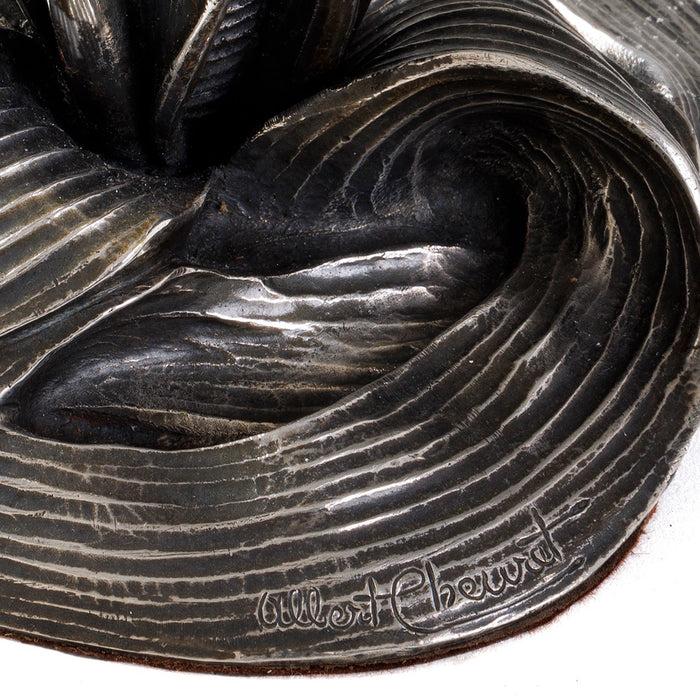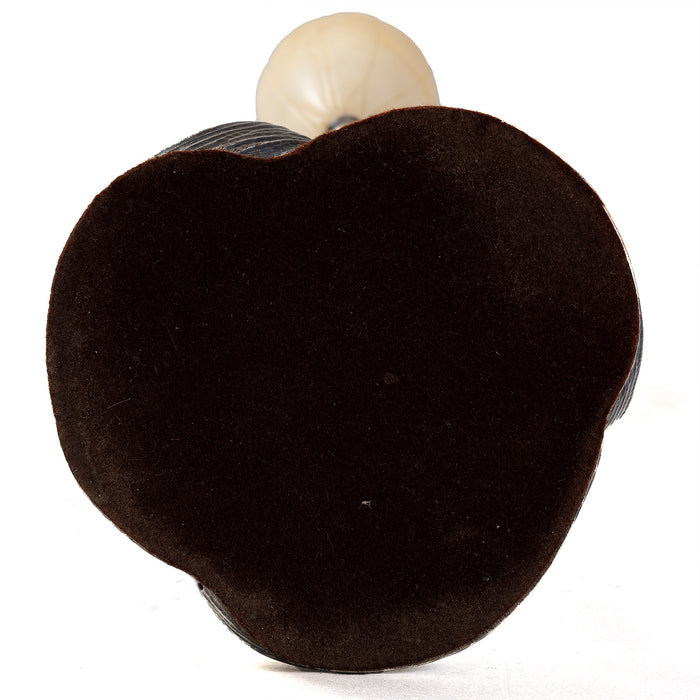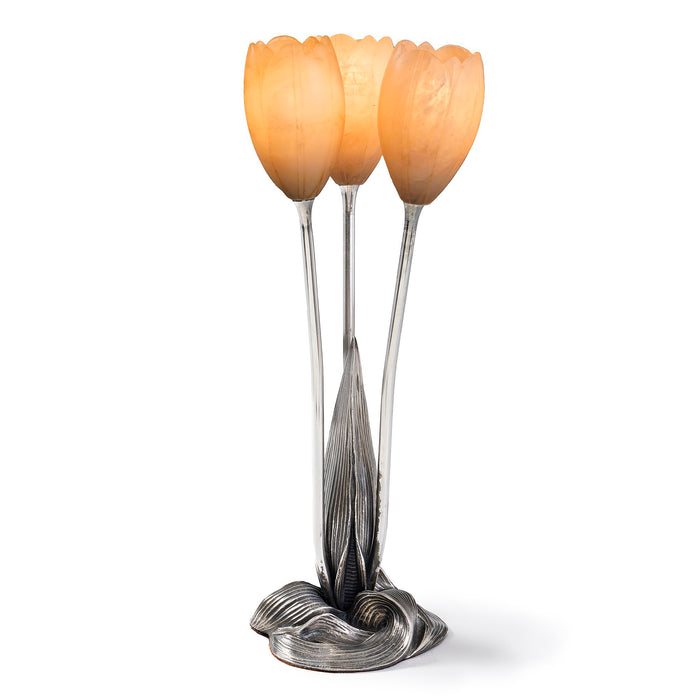
Albert Cheuret Silvered Bronze and Alabaster "Tulip" Lamp
The innovative structure of Albert Cheuret's lamp mirrors a cluster of three white tulips emerging from a mound of earth. Cheuret fashioned his lamp as a trio of tulip flowers featuring intricately carved alabaster flowerheads. The use of alabaster, a material extensively employed by the Romans for intricately carved shades, is notable. Its translucent properties enabled it to transmit light when illuminated from within or when positioned against a window. Within the context of this lamp, Cheuret's choice of alabaster skillfully captures the delicate nature of a flower's petals.
- Product Details
- Curator's Notes
Item #: EL-21415
Artist: Albert Cheuret
Country: France
Dimensions: 15" height, 6.5" diameter
Materials: Silvered Bronze, Alabaster
Signed: Albert Cheuret
Literature: Lumières, je pense à vous, exh. cat., Centre Georges Pompidou, Paris, 1985, p. 149, pl. 197
Albert Cheuret was born in 1884 in Paris. He studied sculpture with Jacques Perrin, professor at the Ecole des Beaux Arts in Paris (fine arts school), and with Georges Lemaire. The artist began his career in 1907 and set up his studio at 11 Avenue Franco-Russe, near the Champ de Mars. In 1908, he received 1st prize in the Ornamental Sculpture competition organized by the Réunion des fabricants de bronze (bronze manufacturers guild) founded in 1818. He exhibited regularly at the Salon of French Artists. He was an officer in the 1st engineering corps during WWI. Wounded twice, he was awarded Knight of the Legion of Honour in 1920. Albert Cheuret was also granted numerous commissions for commemorative structures, notably for the cemeteries of Montparnasse and Père Lachaise in Paris, as well as the war memorial for the city of Cannes. At the Universal Exhibition in Paris in 1925, Albert Cheuret rented a stall along the Alexandre III bridge and presented his famous light fixtures in bronze and alabaster, his favorite materials. He also exhibited clocks, animal figures, and furniture - tables, consoles, end tables - whose sculptural crafting attests to his talent as an artist.

